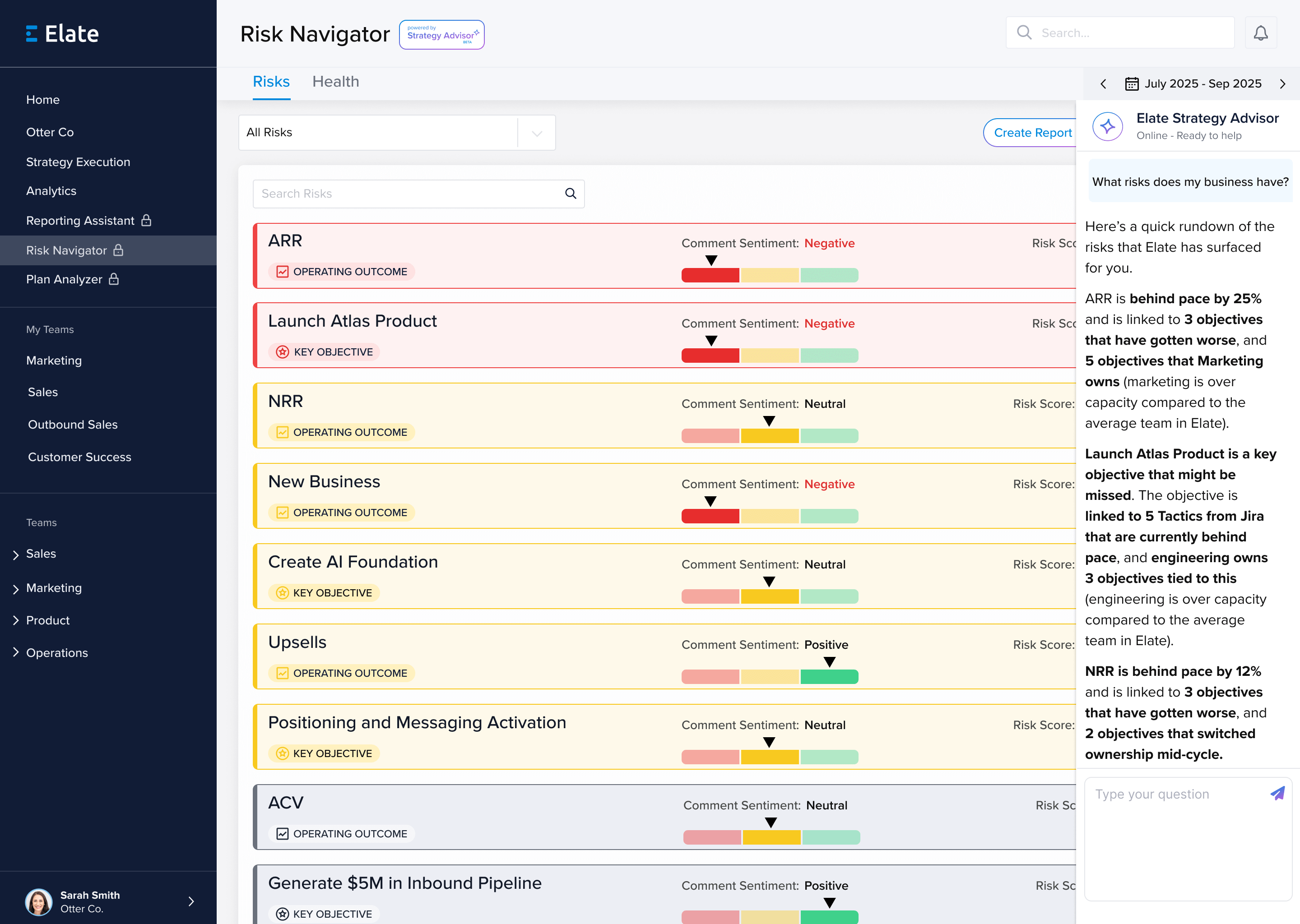CEOs need more support than an executive assistant can provide. They need the assistance of a chief of staff. But especially when a new CEO takes over with a mandate for change, careful definitions of objectives and key results (OKRs) for the chief of staff are essential. These OKRs guide other decisions, such as retention or replacement of senior managers, and how the corporate suite will allocate its time.
Many CEOs fail to pay attention to a key contributor to their success: How the day-to-day business of their offices is administered. They don't have a system for ensuring the information they need is available to them when they need it. They don't have a system for ensuring follow-up on their decisions.
Any management guru writing a book on how to be a great chief of staff would need two OKR examples for chief of staff:
- Make sure the CEO knows what the CEO needs to know when the CEO needs to know it, and
- Make sure executive decisions are acted on in a timely fashion.
Successful chiefs of staff are the eyes and ears that buffer their CEOs from torrents of information to give the CEO space for creative leadership. It is the chief of staff, not the CEO, who ensures that the new executive does not default to the management that created their job opening. It is the CEOs job, however, to structure the position of chief of staff so the chief of staff can achieve efficiencies of time and information flow.
So, what are the duties of a chief of staff?
Every CEO will have different priorities for this key support position, but here are some ways to conceptualize the role:
- The chief of staff is a confidant. A chief of staff is loyal to the executive, not to some other organizational agenda.
- The chief of staff is a traffic manager. Something like an air traffic controller, the chief of staff manages critical high-speed inbound and outbound communication.
- The chief of staff is a silo manager. Chiefs of staff decide what remains in organizational niches and what needs to be brought to the attention of top management.
- The chief of staff is an honest broker. Other members of senior management represent their own turf in the company. The chief of staff is a truth-teller who considers the objectives of the entire company.
- The chief of staff is a communicator. The chief of staff reliably communicates the CEO's goals when the CEO's attention is directed elsewhere.
These analogies lend themselves to OKRs. One of the most important deliverables for any chief of staff is managing meetings. The chief of staff drives the structure, content, and timely execution of staff meetings, board meetings, investor meetings, planning meetings, and morale events.
The chief of staff helps the CEO manage presentations to a variety of audiences, and also ensures that the CEO is networked to find those audiences. Chiefs of staff also assist with written communications
And the chief of staff makes sure that company projects are completed on time and on budget. This OKR includes managing the budget of the executive office itself.
The role of the chief of staff evolves over time. Many chiefs of staff rotate to other management positions. Some chiefs of staff grow in their positions and even adapt to working with different CEOs. Every chief of staff needs to grow in the job.
Chief Of Staff Responsibilities
It is important to understand the concept of chief of staff vs executive assistant. Chief of staff job responsibilities do not include managing the chief executive's daily schedule. Chief of staff responsibilities do not include routine correspondence or approval functions. Unlike the executive assistant, the chief of staff operates largely independently of the CEO, as a full-fledged member of the corporate suite's executive team (although at a lower salary).
Carefully considering the reasonable meaning of the chief of staff role leads to defining key performance indicators (KPIs) that make sense. Following are some examples.
Chiefs of staff are almost universally involved in planning budgets, using information from the company's finance department. A KPI for any chief of staff is matching budgets to company goals.
Chiefs of staff typically drive special projects. They take the initiative to define special projects that are important to the company, such as restructuring the workforce, reviewing executive compensation, formulating a framework for litigation, and operationalizing hiring and promotion policies to ensure inclusion.
Chiefs of staff set the tone for meetings requested by their CEOs. They inform their CEOs of group dynamics when meetings are requested by others. They provide clear and consistent messages for the CEO across meeting venues. They may be able to signal or use code words to guide their CEOs through emotionally difficult situations in corporate meetings.
Chiefs of staff keep their executives informed, and they provide a plan C, plan D, and plan E, when plans A and B don't work.
Chief of Staff Goals
What is an optimal chief of staff career path? How do chief of staff goals promote their own careers?
It's important for a rotational chief of staff to realize that their position will eventually, well, rotate. Chiefs of staff in rotational positions should prioritize working with their CEOs to define their next role. They should make a goal of helping the CEO to find a candidate to replace them who will make their own future careers with the company easier.
Not every chief of staff in a preset rotation, of course, will have their next position lined up. For these chiefs of staff, it is important to have special projects that will allow them to stay with the company or to scout out a new position with another company if those special projects cannot be found. Chiefs of staff who have valuable technical skills will often find open-ended projects without direct reporting responsibilities that are important to the company. Or a rotational chief of staff will deliver gains in productivity and impact so well that the CEO will find inducements for them to stay even after their planned tenure is completed.
Chiefs of staff who are in the position for the long term need to set their goals in terms of their CEOs and likely future CEOs. Chiefs of staff become indispensable when they generate KPIs that indicate success despite the fact their CEO's description of their job is nebulous, ambiguous, and poorly defined. A chief of staff who can succeed in a job that would scare other applicants away is ensured of long-term employment if not growth with the company.
Qualities of a Chief of Staff
There are many qualities of a successful chief of staff that do not lend themselves to objective OKRs.
Chiefs of staff need to be masters of influence without authority. They need to have the soft, subtle people skills to persuade multiple stakeholders to conform to corporate goals set by the CEO. They need to master what management expert Tyler Parris calls "sneaker diplomacy," the ability to promote corporate goals in daily interactions as they "walk around" the company. In most corporate settings, the chief of staff will need the ability to project soft, people skills through digital communication
Chiefs of staff need exceptional skills in managing egos. They need tact, balance, and poise, especially when their CEOs are challenged in these areas. They need to be able to connect the dots between the people and activities of the company.
Chiefs of staff need to promote continuity. They keep the going when there is a crisis in the executive suite, when the CEO is away, or during the transition to new leadership.
The soft skills essential to the chief of staff position can be evaluated in objective chief of staff accomplishments:
- Chiefs of staff help enterprise leaders define strategic priorities for their companies.
- Chiefs of staff drive real time alignment of decisions and strategic priorities across the company.
- Chiefs of staff create room for charismatic executive leadership, especially in startups, by articulating and reinforcing standard operating procedures that prevent distractions from the CEO's messaging.
- Chiefs of staff adjust their goals to ensure continuity for the company
The ability of a chief of staff to help the CEO steer the company through difficult times creates dynamic OKRs.
When the CEO needs to increase efficiency in an organization that is running well, the chief of staff helps the CEO stay organized and able to focus on important topics. The chief of staff understands the business, manages projects, manages relationships, and keeps the corporate suite running smoothly. The chief of staff keeps direct communications with the CEO to a minimum, and probably does not offer advice
When the CEO needs to make important changes to company strategy, the role of the chief of staff changes. Now it becomes important for the chief of staff to manage key projects well. The chief of staff does problem analysis and strategic thinking, simplifies complexity, and makes sure that projects are completed. The chief of staff communicates directly with the corporate leader on a regular basis through the completion of a project, and takes a leadership role over groups assigned to implement new company policy
When the CEO is implementing major changes in operations, company culture, technology, or strategy, the role of the chief of staff changes again In these situations, the chief of staff becomes the CEO's risk manager. The chief of staff uses personal knowledge of key personnel to add value to the CEO's vision, and to anticipate and avert problems. The chief of staff takes on a role equal to other senior management, and offers advice to the CEO on a range of topics.
No matter what OKRs are set for the chief of staff, two qualities of the CEO are critical success. A chief of staff cannot succeed when a CEO is determined to reject the chief of staff's advice. CEOs who are accustomed to getting everything their own way need executive assistants, not chiefs of staff.
Additionally, a chief of staff can only succeed when CEO and chief of staff are both capable of giving and receiving feedback. The will and ability to communicate are essential.
Chiefs of staff can help their CEOs sustain the effort needed to reach their highest potential for their companies. The right chief of staff can offer solid assistance to the CEO seeking to reach high goals.











